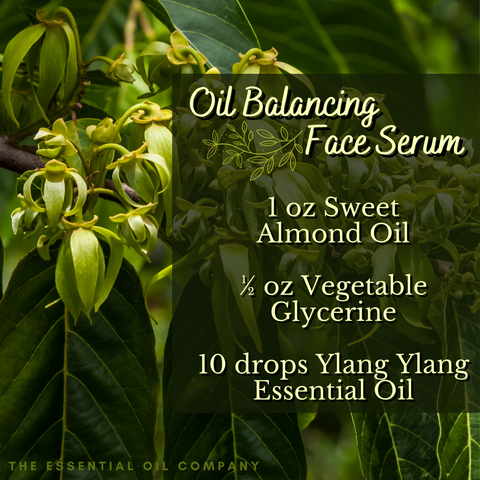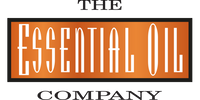
Ylang Ylang: Product Highlight
The name Ylang Ylang is pronounced “ee-lahng ee-lahng” and comes from the Tagalog language meaning “The Flower of Flowers”.
Plant Details
Ylang Ylang (Canangium odorata var. genuina) Family Annonaceae essential oil is derived from the flowers of the Ylang Ylang tree. This tropical species of tree is native to India and other countries surrounding the Indian Ocean, such as Malaysia, Indonesia, the Philippines, and parts of Australia. It is commonly cultivated for essential oil production in areas of similar climate like Madagascar, Polynesia, Melanesia, and Micronesia. It is fast-growing and can grow up to around fifteen feet a year before reaching its final height of around forty feet. The leaves of the tree are a pointed oval shape with a smooth and glossy appearance. The flowers are yellow, and star-shaped with long, narrow petals.
History
Ylang Ylang has many benefits and properties that have led to its use historically in traditional healing throughout many countries. Healers in the Philippines use Ylang Ylang essential oil to help treat cuts and burns as well as insect and snake bites. Dried Ylang Ylang flowers are used in both Java and Vietnam to help treat malaria and its symptoms. Traditional healers from Papua New Guinea believe that Ylang Ylang can also be effective in treating gout and a variety of stomach ailments. Traditional healers from the Northern Mariana Islands use both the flowers and bark of the Ylang Ylang tree to treat pneumonia and stomach ailments. In the Molucca islands, the oil was used to make a popular hair pomade called Macassar Oil. The many medicinal properties of Ylang Ylang were finally discovered by a French chemist In the early 20th century. This led to its use as a treatment for malaria, typhus, and various intestinal infections. Eventually, its ability to ease anxiety and its related symptoms became more well known and utilized throughout the world.
Extraction
Once trees reach three to four years of age, the Ylang Ylang flower harvest can begin. Peak harvest times range from December to March and one tree can be harvested multiple times over several weeks. Ylang Ylang flowers are ready to be picked when they reach a bright yellow color with a red center. To maintain the quality of the essential oils, the flowers must be transported and distilled within 24 hours of harvest. Ylang Ylang essential oil is produced through hydrodistillation of the flowers of the plant. The resulting oil is light yellow with a uniquely sweet and almost fruity, floral aroma. Distillation of Ylang Ylang flowers results in five varieties of essential oil. Ylang Ylang Extra is obtained within the first two hours of distillation while Ylang Ylang I, II, and III are extracted in the following hours of distillation at specific intervals of time. Ylang Ylang Complete is the final variety and it is usually achieved after six or more hours of distillation. While Ylang Ylang Extra has a richer, sweeter floral scent, that aroma becomes lighter through extended distillation. Ylang Ylang Complete is still sweet and floral with a more herbaceous undertone than the previous distillations.
Benefits and Uses
Ylang Ylang essential oil is widely known for its unique and powerful floral scent which makes it a sought-after perfumery ingredient. Its fragrance is pleasantly intense and long-lasting. In addition to its amazing aroma, Ylang Ylang also had a long list of aromatherapy and topical uses that make it a must-have essential oil.
Ylang Ylang essential oil is known to soothe symptoms of anxiety and stress when used in aromatherapy applications. It can help to ease tension and combat fatigue while also clearing negative energy and nervousness that can be associated with both anxiety and depression. In turn, it also promotes positive feelings and increases optimism, helping to uplift the mood. Ylang Ylang essential oil works to lower the body’s stress responses and inspire feelings of overall relaxation. Ylang Ylang also possesses a nervine property known to enhance the health of the nervous system and lower the stress exerted on the nerves, reducing the chances of causing potential nervous disorders.
Used topically, Ylang Ylang essential oil is highly beneficial to the hair and skin. It may be best known for its ability to balance and regulate oil production in both the skin and scalp, helping to prevent dry skin or excessive oiliness. Ylang Ylang also has anti-inflammatory properties that help it to soothe irritated skin and decrease swelling. It enhances circulation which helps improve skin regeneration as well as stimulating new hair growth. For the hair, Ylang Ylang is known to enhance texture and luster as well as soothe dandruff, and reduce hair loss. Its hypotensive quality is believed to balance blood pressure levels and normalize the heart rate. Antibacterial and antimicrobial properties in Ylang Ylang essential oil make it perfect for use in facilitating the healing of wounds. It can be used to help stop infections from forming in minor cuts, burns, and other injuries. Ylang Ylang essential oil can be a great tool to have on hand during that time of the month. Its mood balancing and antispasmodic properties can help to ease the mood swings and cramps associated with PMS. Used topically and massaged into the lower abdomen and back, Ylang Ylang can soothe cramping, muscle aches, stiffness, and bloating.
Here are some recipes using Ylang Ylang essential oil that we love…

Uplifted and Optimistic Diffuser Blend
-
4 drops of Ylang Ylang Essential Oil
-
2 drops of Grapefruit Essential Oil
-
2 drops of Lemon Essential Oil

Skin Soothing Roll-on
Ingredients
- 10 ml Amber Glass Roll-On Bottle
-
10 ml of Fractionated Coconut oil
-
5 drops of Ylang Ylang Essential Oil
-
5 drops of Lavender Essential Oil
Instructions
Add the essential oils to the bottle. Fill the rest of the bottle to the top with fractionated coconut oil. Replace the rollerball and cap and gently shake and roll across your skin.

Flower of Flowers Perfume
Ingredients
-
4 oz Amber Glass Bottle with Spray Top
-
1 ½ oz of Distilled Water
-
2 oz of High Proof Alcohol
-
½ tsp of Vegetable Glycerin
-
½ tsp of Fractionated Coconut Oil
-
10 drops of Ylang Ylang Essential Oil
-
5 drops of Sweet Orange Essential Oil
-
5 drops of Vanilla Fragrance Oil
Instructions
Add all ingredients to the bottle and shake well to combine. Spritz all over your body for an exotic and sweet floral fragrance.

Oil Balancing Face Serum
Ingredients
-
1 oz Sweet Almond Oil
-
½ oz Vegetable Glycerine
-
10 drops of Ylang Ylang Essential Oil
Instructions
Add jojoba oil, sweet almond oil, and vegetable glycerin into a small dish and whisk them together until they are fully combined. Add the essential oils and stir again. Try to avoid adding too much air into the mixture as you stir to prevent bubbles. Transfer the mixture carefully into a 2oz amber glass bottle with a dropper top for easy use. Store in a cool, dark location out of the reach of children and pets.
Directions
After cleansing your face, apply a few drops to your fingertips and gently rub them into the skin. Use fingertips to press the product into the skin to ensure absorption.

Stress Be Gone Bath Salts
Ingredients
-
1 cup of Epsom Salt
-
½ cup of Coarse Mineral Sea Salt
-
¼ cup of Fractionated Coconut oil
-
6 drops of Ylang Ylang Essential Oil
-
4 drops of Chamomile Essential Oil
-
2 drops of Bergamot Essential Oil
Instructions
Mix all the ingredients thoroughly and store them in a tightly closing container. Add a handful to a warm bath to ease stress and relax.

